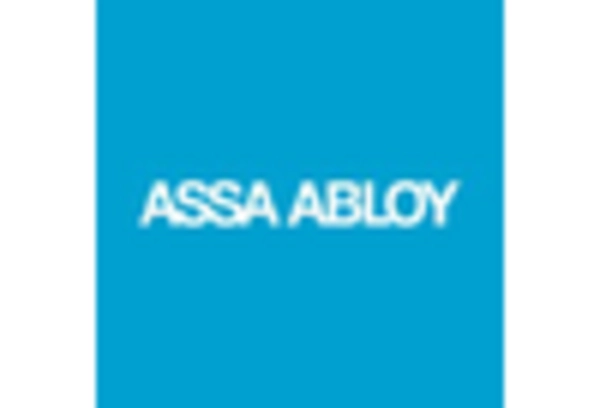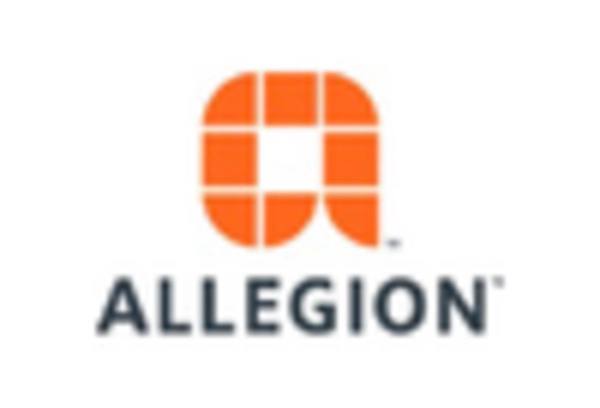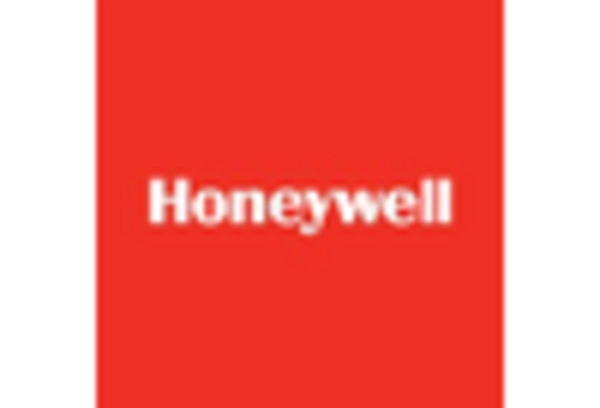Regulatory Compliance
Regulatory compliance is a critical driver for the Industrial Access Control Market. Organizations are increasingly required to adhere to stringent regulations regarding data protection and security. Compliance with standards such as GDPR and HIPAA necessitates the implementation of robust access control measures. In 2025, the market is anticipated to grow as businesses invest in solutions that ensure compliance and mitigate legal risks. This trend underscores the importance of access control systems in safeguarding sensitive information and maintaining regulatory standards, thereby fueling the growth of the Industrial Access Control Market.
Focus on Employee Safety
The emphasis on employee safety is becoming a prominent driver in the Industrial Access Control Market. As organizations strive to create secure working environments, the demand for access control systems that monitor and manage employee access is increasing. In 2025, the market is expected to reflect this trend, with a growing number of companies investing in solutions that enhance workplace safety. This focus on safety not only protects employees but also safeguards organizational assets, thereby contributing to the overall growth of the Industrial Access Control Market.
Rising Security Concerns
The Industrial Access Control Market is experiencing a surge in demand due to escalating security concerns across various sectors. Organizations are increasingly prioritizing the protection of sensitive information and physical assets. In 2025, the market is projected to reach a valuation of approximately 10 billion USD, reflecting a compound annual growth rate of around 8 percent. This growth is driven by the need for enhanced security measures to mitigate risks associated with unauthorized access and potential breaches. As industries face evolving threats, the adoption of advanced access control systems becomes imperative, thereby propelling the Industrial Access Control Market forward.
Technological Advancements
Technological advancements play a pivotal role in shaping the Industrial Access Control Market. Innovations such as artificial intelligence, machine learning, and the Internet of Things are revolutionizing access control solutions. These technologies enable real-time monitoring, predictive analytics, and automated responses to security incidents. In 2025, the integration of these technologies is expected to account for a significant portion of the market, enhancing operational efficiency and security. As organizations seek to leverage these advancements, the Industrial Access Control Market is likely to witness a transformation in how access is managed and monitored.
Increased Adoption of Cloud Solutions
The shift towards cloud-based solutions is significantly influencing the Industrial Access Control Market. Organizations are increasingly adopting cloud technologies for their flexibility, scalability, and cost-effectiveness. By 2025, it is estimated that cloud-based access control systems will constitute a substantial share of the market, driven by the need for remote access and centralized management. This trend allows businesses to streamline operations and enhance security protocols, making cloud solutions a preferred choice. Consequently, the Industrial Access Control Market is poised for growth as more organizations transition to cloud-based access management.

















Leave a Comment